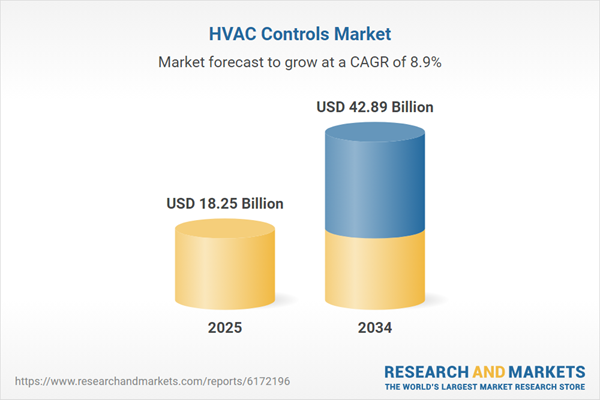Rising Deployment of HVAC Controls in Various Industries is Catalysing the Market Growth
The global market for HVAC controls is being driven by rapid industrialisation owing to the growing demand for cooling and heating equipment in several industries like mining and power generation. The introduction of stringent government regulations to combat increasing pollution levels is prompting various industries and commercial organisations to install HVAC control in their operating areas to reduce utility bills, thus fuelling the industry growth. The HVAC controls industry is anticipated to witness significant growth owing to the introduction of various government policies aimed at a clean, green, and sustainable environment. Moreover, several governments are offering favourable incentives to promote the use of energy-saving infrastructure in both commercial and residential spaces, which is expected to bolster the industry growth. The demand for HVAC control systems is also expected to soar due to the development of technologically advanced smart controls to automate the control systems. Furthermore, the increasing replacement activities of old control systems with more efficient, more intelligent, and more sophisticated controllers due to their advanced properties are also expected to bolster the market for HVAC controls in the forecast period.HVAC Controls Market Segmentation
HVAC controls, variously known as heating, ventilation, and air conditioning controls, are equipment that regulates the heating and cooling conditions to aid in maintaining optimal temperature in enclosed spaces. A sensing tool typically compares the actual temperature of the spaces with a target temperature to enable the control system to initiate an action.Market Breakup by Control Loop Type
- Open- Loop Control
- Closed- Loop Control
Market Breakup by System
- Temperature Control Systems
- Ventilation Control Systems
- Humidity Control Systems
- Integrated Control Systems
Market Breakup by Component
- Sensors
- Controllers and Controlled Devices
Market Breakup by Control System Type
- Direct Acting Systems
- Electric/Electronic Systems
- Pneumatic Systems
Market Breakup by Implementation Type
- New Construction
- Retrofit
Market Breakup by Application
- Residential
- Commercial
- Industrial
Market Breakup by Region
- North America
- Europe
- Asia-Pacific
- Latin America
- Middle East and Africa
The increasing demand for remote control systems, which can be controlled easily is leading to a surge in investments in HVAC controls by industrial, residential, and commercial end users. This, in turn, is increasing research activities for the development of innovative HVAC control systems. The expansion of infrastructure of industrial, residential, and commercial buildings is further adding to the demand for HVAC controls. Furthermore, the exponential population growth in developing economies such as China, India, Brazil, and Mexico, among others is resulting in rapid urbanisation and industrialisation, which is surging the demand for HVAC controls.
The growing demand for HVAC controls can be attributed to rising disposable incomes and increasing consumer spending, across major economies, hence catalysing the market growth. In addition, rapid climate change is one of the major factors that is augmenting the demand for HVAC. As climate change is resulting in uncertain climate conditions and rising global temperature, HVAC controls equipment are increasingly deployed in residential spaces to enhance air quality. Furthermore, increasing demand for cloud computing in HVAC is expected to drive the market growth in the coming years.
Key Industry Players in the Global HVAC Controls Market
The report presents a detailed analysis of the following key players in the global HVAC controls market, looking into their capacity, market shares, and latest developments like capacity expansions, plant turnarounds, and mergers and acquisitions:- Honeywell International Inc.
- Siemens AG
- Emerson Electric Co.
- Schneider Electric SE
- Lennox International Inc.
- Others
Read Our Others HVAC Market Regional Reports:
Saudi Arabia HVAC Market
UAE HVAC Market
Chile HVAC Market
France HVAC Market
Middle East and Africa HVAC Market
Table of Contents
Companies Mentioned
The key companies featured in this HVAC Controls market report include:- Honeywell International Inc.
- Siemens AG
- Emerson Electric Co.
- Schneider Electric SE
- Lennox International Inc.
Table Information
| Report Attribute | Details |
|---|---|
| No. of Pages | 150 |
| Published | August 2025 |
| Forecast Period | 2025 - 2034 |
| Estimated Market Value ( USD | $ 18.25 Billion |
| Forecasted Market Value ( USD | $ 42.89 Billion |
| Compound Annual Growth Rate | 8.9% |
| Regions Covered | Global |
| No. of Companies Mentioned | 6 |









